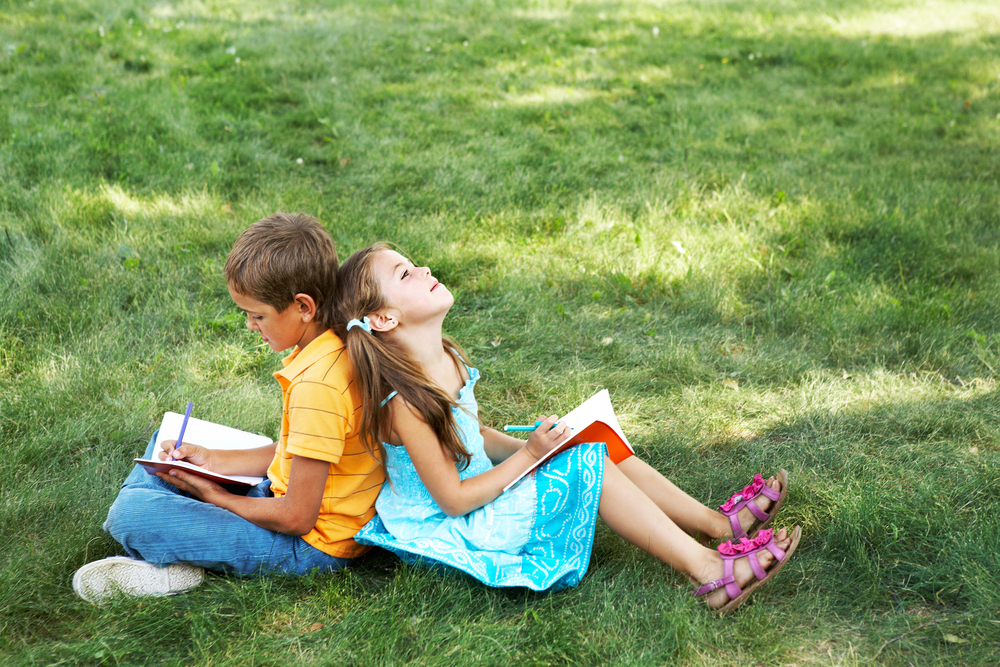The Importance of Arts and Crafts in Early Education
Nov. 10, 2017
It is no secret to parents that kids love art. As soon as toddlers can grasp a crayon their little hands, they are busy scribbling away on coloring pages, and sometimes even the nearest wall or door! As kids get older, the level of artistic ability grows with them.
Thanks in part to the advent of Pinterest, moms everywhere are finding the next big arts and crafts activity to satiate their child’s thirst for expressing their creativity. Before you know it, the fridge door is filled with adorable drawings and creations! Let’s explore the importance of arts and crafts in early childhood education, and discover the many amazing ways art helps our kids grow academically, and as a person.

Why is Art Important in Early Childhood Education?
Including art as an important part of your child’s daily routine can have an enormous impact on your child’s growth. Not only will it prepare your child for academic success in school, but it will foster early emotional development and offer your child opportunity to express themselves creatively.
Believe or not, through art, your child will:
-
Strengthen spatial reasoning and early math skills
When kids engage in an art project, even from an early age, they explore size and shapes. Kids begin evaluating and comparing objects, strengthening early math skills. More importantly, drawing, painting, and other art activities help kids to develop spatial reasoning skills. Important to STEM-related field and activities, spatial reasoning allows kids to mentally imagine three dimensional shapes, which in turn prepares students for complex math and science concepts.
-
Build critical language skills
Think about a time your child completed an art project. No matter if it was a drawing or craft they made, your child was undoubtedly proud of their artwork. In fact, your child probably will tell you all about their project, how they made it, and the process they took to complete their crafty creation.
This is exactly how artwork strengthens early language skills. As kids talk about their work and describe the process, they build language skills. Keep the conversation going by asking questions about their work, and introduce vocabulary words that might apply.
-
Hone fine motor skills
Developing a proper pencil grip is critical to early writing skills. As kids use crayons and paintbrushes, they develop the fine motor skills needed to grasp a pencil to begin writing. Cutting with scissors, and gluing small parts on paper help kids develop the dexterity they need to perform a whole host of everyday tasks important to educational success.
-
Practice decision making
When you think about it, kids aren’t in control of much in their lives. Kids are born dependent on mom and dad. Art can serve as one of the very first outlets for independence. As kids complete art projects, they make choices about colors to use, and are able to develop decision-making skills to personalize their artwork. This independence fosters early critical thinking and analysis skills as children think through their choices and make decisions.
-
Foster Emotional Development and Regulation
Kids develop emotionally through artwork by expressing their individuality and emotions through their work. By having the free reign to design what they wish, they can further explore and cultivate their unique individual differences. Art can also serve as a way for kids to communicate their feelings. This in turn gives kids a tool to use to regulate their emotions, and way for parents to understand their children. Some kids even turn to art as an escape, or a way to handle stress.
Check out a collection of worksheets for early arts and crafts activities on our website or in our app on the App Store and Google Play. Check the video below to learn how to give your kid a brain break from rigorous academic learning.
It’s obvious that art is a critically important aspect of a child’s development. While at first glance artwork seems to be purely an activity based on entertainment value, it’s clear that artwork is key to developing a well-rounded child. When your child needs a break, find a fun craft to create, or color a picture; your child will still be learning, and more importantly— they’ll love it!











